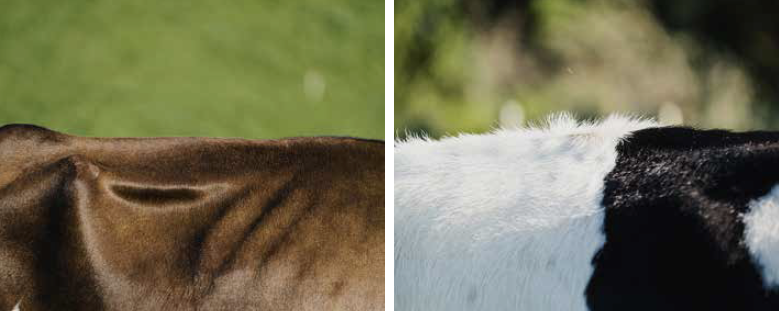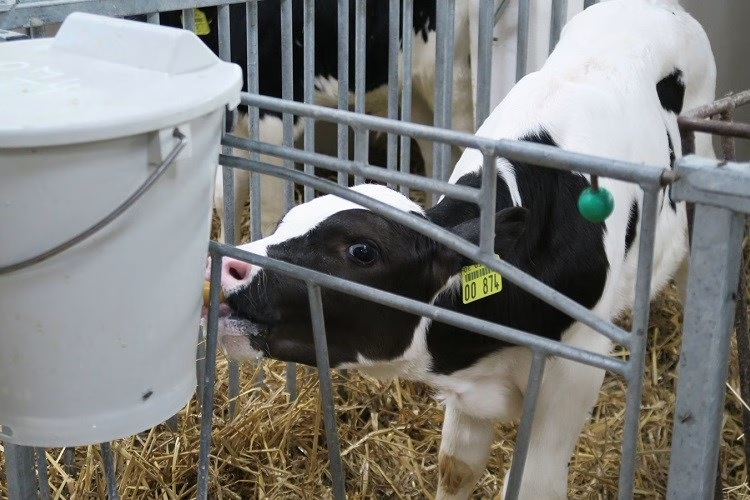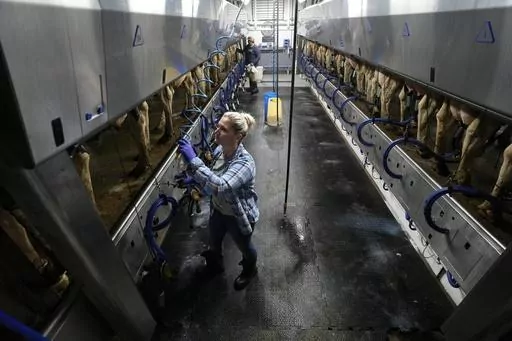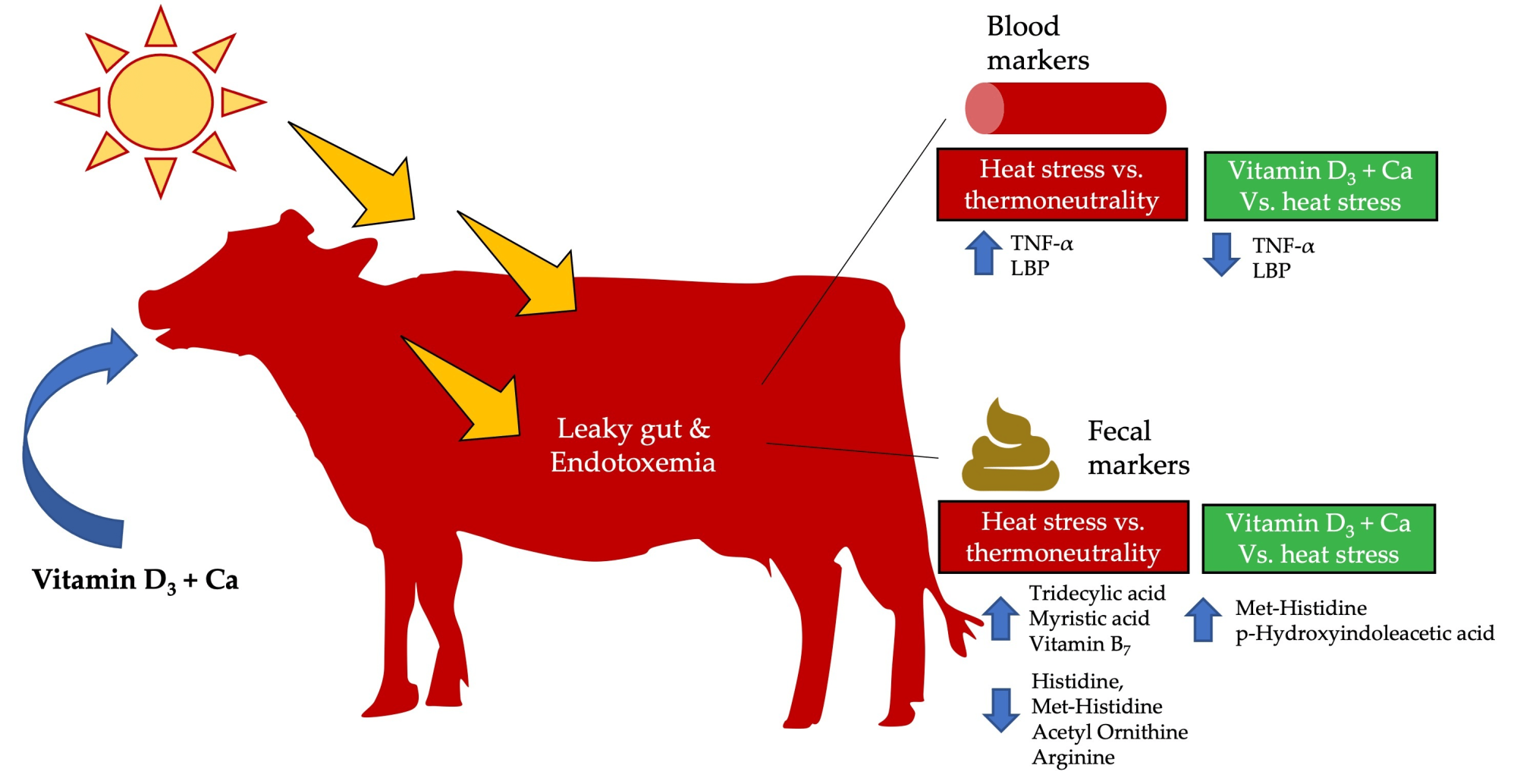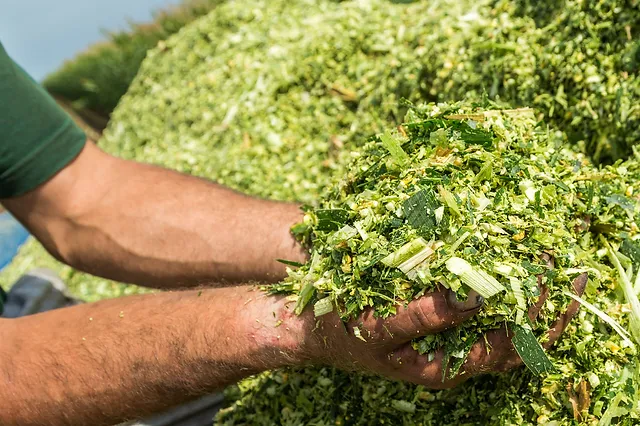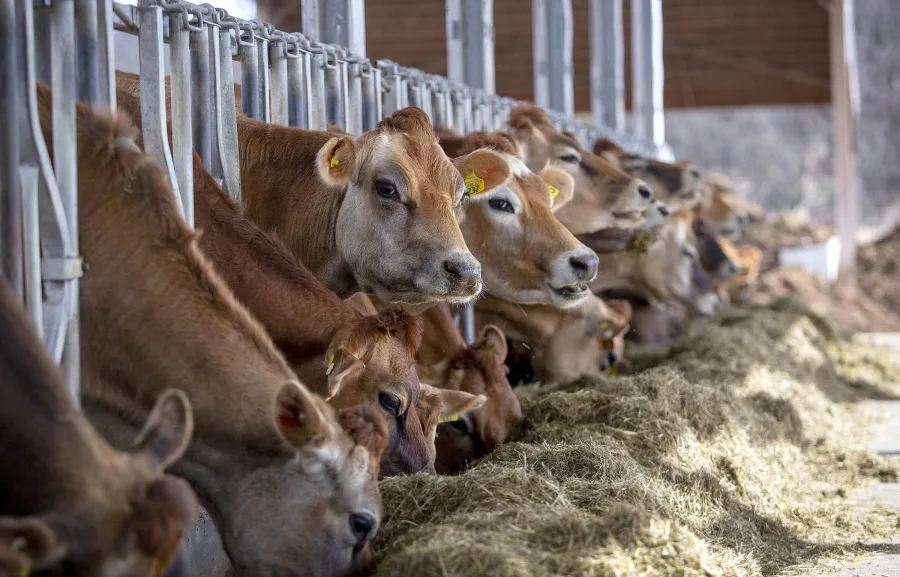Isoacids can boost your dairy farm’s feed efficiency and milk production. Are you curious about the latest in dairy nutrition? Read our expert insights.
Summary: Are you ready to enhance your dairy farm‘s productivity? This article gives the latest insights on isoacids and their critical role in dairy cattle nutrition. Isoacids improve fiber digestibility, boost microbial protein synthesis, and impact various lactation stages, improving feed efficiency and dairy production. Research shows that isoacids help microorganisms in the rumen digest cellulose, converting tough plant fibers into consumable nutrients and enhancing milk production. They are essential for microbial protein synthesis, providing higher-quality protein for the cow and optimizing feed intake. Investing in isoacids is a strategic step towards sustainable and profitable dairy farming. Actionable tips include starting with small doses, measuring milk production, monitoring feed intake, observing cows’ health, making regular adjustments, and using technological tools for real-time analytics.
- Isoacids are crucial in improving dairy cattle’s fiber digestibility and microbial protein synthesis.
- These improvements enhance feed efficiency, better milk production, and overall dairy farm productivity.
- Rumen microorganisms utilize isoacids to break down cellulose, turning tough plant fibers into nutrients.
- Investing in isoacids can promote more sustainable and profitable dairy farming.
- Actionable steps include starting isoacids in small doses, regularly measuring milk production and feed intake, monitoring cows’ health, and making necessary adjustments.
- Leveraging technological tools for real-time analytics can optimize the use of isoacids in dairy nutrition.
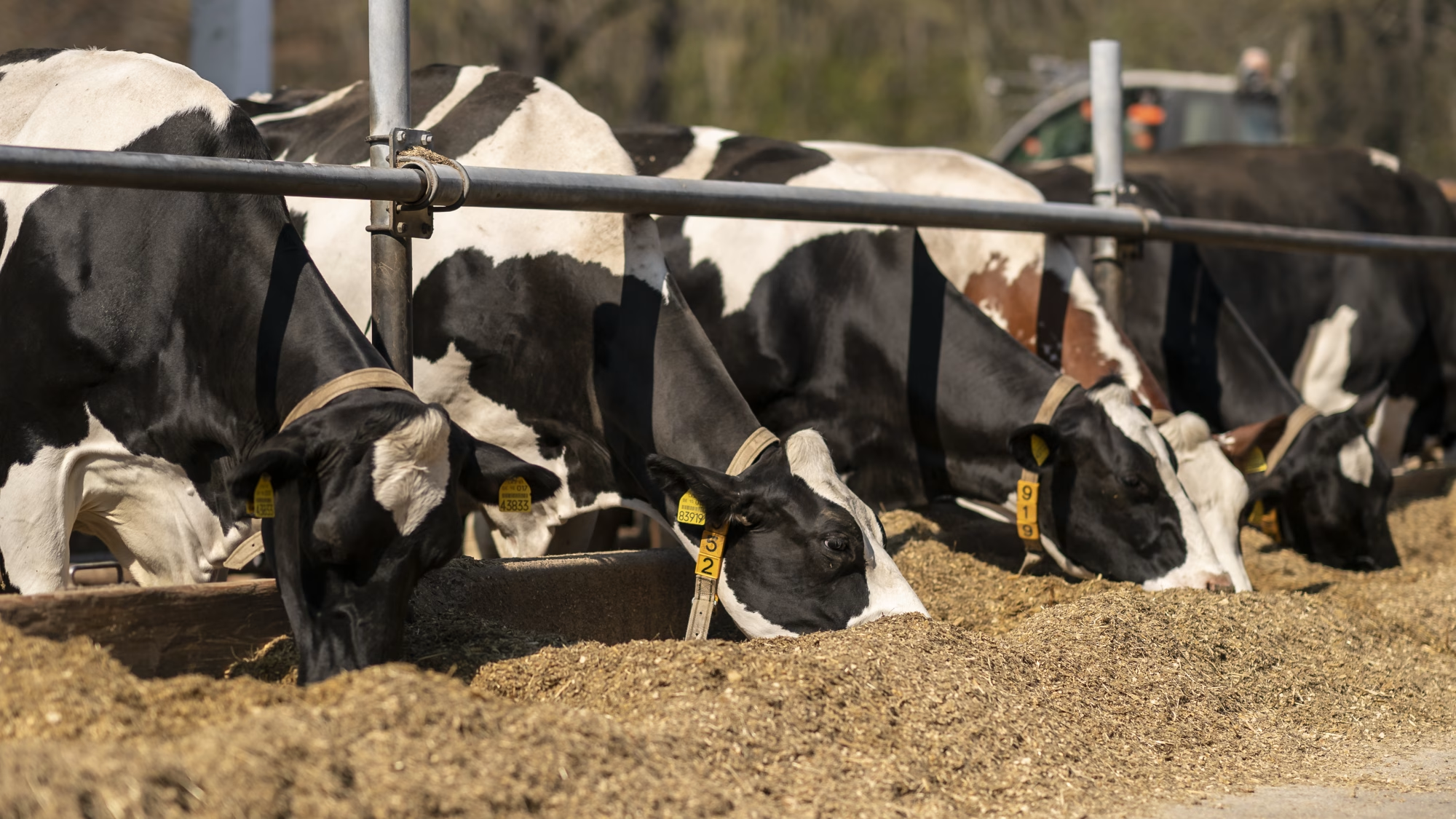
Have you ever considered what may boost your dairy herd’s output to another level? The promising research in dairy nutrition suggests that isoacids might be the game changer you’ve been looking for, offering a hopeful future for your dairy operations. Dairy nutrition is the foundation of a successful enterprise. Every aspect of your cows’ nutrition is essential for their health, milk output, and general performance. This is where isoacids come into play as a breakthrough ingredient. These chemicals promise to improve fiber digestibility and microbial protein production, substantially altering our perspective on feed efficiency.
“Isoacids have the potential to not only boost milk production but also optimize feed intake, thereby improving overall feed efficiency,” says Dr. Jeff Perkins, a renowned professor of animal science at Oregon State. Consider a situation where you obtain more milk from the same feed or maybe less. The advantages of adding isoacids to your dairy cattle’s diet may be dramatic. Join us as we explore the science of isoacids and their effects at various phases of lactating feeding.
Stay with us as we look at these insights that potentially transform your dairy output.
To dive deeper, listen to the podcast with Dr. Jeffrey Firkins on isoacids in dairy nutrition.
Isoacids: The Essential Nutrients Your Cows Can’t Produce But Need
Consider isoacids as nutrients that cows cannot produce independently but are required for proper digestion and health. Cows, like humans, need isoacids to aid food digestion.
When cows consume, the food ends up in the rumen, a portion of their stomach. That’s where the magic occurs. Isoacids serve as aids for the microorganisms in the rumen that digest cellulose. These bacteria are little workers who convert tough plant fibers into consumable nutrients. With isoacids, these workers would be more efficient, like attempting to construct a home with all the necessary tools.
One notable advantage of isoacids is better fiber digestion. When cows digest more fiber, they obtain more energy from their meal. It’s comparable to how supplementing your food may help your body work better. The more fiber the bacteria can digest, the more nutrients the cow obtains, resulting in improved health and production.
Another essential function of isoacids is microbial protein synthesis. Microorganisms in cows’ rumens create protein necessary for milk production and development. Isoacids promote microbial protein synthesis, resulting in more and higher-quality protein for the cow. It’s similar to having a high-quality fertilizer that helps your garden grow more extensive and robust.
Simply put, isoacids assist cows in optimizing their meals by improving fiber digestibility and microbial protein synthesis. This results in increased milk output and improved overall health, making them an essential part of dairy cow nutrition.
Isoacids: Maximizing Feed Efficiency Across Lactation Stages
Isoacids enhance feed efficiency during peak lactation when a cow’s nutritional needs are most significant. They promote fiber digestibility by increasing microbial protein synthesis and volatile fatty acid (VFA) production. This leads to better milk production. Dr. Jeff Perkins, an OSU professor, said, “In the peak lactation phase, cows that demand to make more milk will eat a little bit more, driven by improved fiber digestibility.”
In contrast, during late lactation, when the cow’s feed intake no longer substantially impacts milk production, isoacids enhance fiber digestibility, resulting in either steady or slightly increased milk output with the same feed intake. This time shows an increase in feed efficiency, comparable to the effects of monensin. According to new research, “in later lactation, milk yield can stabilize with reduced feed intake, leveraging the improved fiber digestibility that isoacids facilitate.”
Case studies have helped to solidify these conclusions. Jackie Borman’s study found that supplementing multiparous cows with isoacids during the transition phase led to substantial improvements in milk fat and body weight increase. These cows better used the increased microbial protein synthesis and VFA production, resulting in increased energy and growth.
Understanding the changes between lactation phases may help dairy producers apply more strategic feeding procedures, increasing production and efficiency. This understanding of isoacids highlights their critical function in dairy nutrition, independent of the lactation stage.
Enhancing Feed Efficiency: The Isoacid Advantage
Isoacids have an essential function in improving feed efficiency in dairy cattle. Isoacids promote dairy output by enhancing fiber digestion. Here’s how these molecules do their magic.
First, let’s discuss fiber digestibility. Dr. Jeff Perkins states, “Isoacids significantly improve Neutral Detergent Fiber (NDF) digestibility, which is critical for maximizing nutritional uptake from feed” [Applied Animal Science]. Cows gain from digesting more fiber in their diet because they get more energy from the same meal while producing less waste.
This improved fiber digestion leads to more microbial protein production. Simply put, the better the fiber is broken down, the more effectively the rumen microorganisms can create microbial protein. This protein is essential for the cow’s health and productivity, directly contributing to increased milk supply and quality.
Furthermore, fiber breakdown creates volatile fatty acids (VFAs), including acetate, which is required for milk fat production. Research suggests that increased acetate production correlates with more excellent milk fat synthesis in the mammary gland. This implies that more milk is produced, and the quality is improved, with a more excellent fat content.
When all of these elements combine, the outcome significantly boosts feed efficiency. According to Dr. Perkins, improved feed efficiency may lead to greater milk output, lower feed consumption, or a mix of both, thus improving dairy farm profitability [Dairy Nutrition Black Belt Podcast].
Farmers may improve their feeding methods by understanding and harnessing the function of isoacids in dairy nutrition, resulting in healthier and more productive herds. Isn’t it time to consider how isoacids might improve your dairy operation?
Turning Isoacid Knowledge into Farm Success
Understanding the chemistry of isoacids is one thing; translating that knowledge into concrete advantages for your herd is another. Here are some practical, actionable tips for integrating isoacids into your feeding regimen to boost your farm’s productivity, empowering you to make positive changes for your herd:
Incorporate Isoacid Supplements
Begin by choosing high-quality isoacid supplements. Smartamine M, a product known for its superior rumen-protected methionine, has shown considerable benefits for milk production and overall herd health.
Optimize Your Diet with RDP
Balance is key. Ensure your herd’s diet provides adequate rumen-degradable protein (RDP) to facilitate effective isoacid utilization. Without sufficient RDP, isoacids won’t deliver their full benefits. Aim for targeted nutritional interventions tailored to each stage of lactation, providing reassurance about the effectiveness of your feeding regimen.
Regular Monitoring and Adjustments
It is critical to assess your herd’s reaction to food changes consistently. Monitor milk production, feed consumption, and general health. Adjust the diet to achieve optimal isoacid levels, especially during critical times like the transition phase.
Learn from Success Stories
Take inspiration from fellow farmers who have successfully integrated isoacids into their practices:
“After incorporating isoacid supplements into our cows’ diets, we noticed a marked improvement in milk yield and feed efficiency. It’s been a game-changer for our operation.”
– Mark S., Ohio
“Balancing feed with isoacids and RDP dramatically improved our cows’ overall health and productivity. I highly recommend this approach to any dairy farmer looking to optimize their herd’s performance.”
– Laura T., Wisconsin
Collaborate with Nutrition Experts
Consult an animal nutritionist to create a feed plan for your herd’s requirements. Their knowledge may assist in fine-tuning nutritional levels, ensuring that your cows get the most out of isoacid supplements.
Remember that the purpose of feeding your cows is not only to feed them but to feed them wisely. By efficiently implementing isoacids, you invest in the health and prosperity of your herd and farm.
Profitability Meets Nutrition: The Economic Gains of Isoacids in Dairy Farming
Farmers continuously seek methods to enhance their operations and increase their profits. Incorporating isoacids into dairy nutrition improves animal health and output while providing significant economic advantages. Improved feed efficiency, as a result of isoacid digestibility, may lead to immediate cost savings. So, how does this work?
First, improved fiber digestibility allows cows to take more nutrients from the same meal. This effective nutrient absorption often increases milk output with the same or less feed consumption. Studies have shown that increasing neutral detergent fiber (NDF) digestibility by 3% may boost milk supply by 1.5 pounds per cow daily. For a farm with 100 cows, this might represent an extra 150 pounds of milk daily, resulting in a significant gain in income.
Furthermore, studies have shown that every 1% increase in feed efficiency may result in a daily savings of around $0.15 per cow [source: Journal of Dairy Science]. While this may seem minor initially, it adds up dramatically over a year. For example, a dairy farm with 200 cows may save roughly $30 per day, or up to $10,950 per year, via feed efficiency improvements.
Furthermore, practical feed usage reduces waste and cheaper purchase or production expenses. With feed accounting for around 50-60% of overall dairy production expenses [source: Penn State Extension], feed efficiency improvements may significantly affect profitability. As a result, investing in isoacids is more than just a cost; it is a strategic step toward sustainable and lucrative dairy farming operations.
Addressing Your Concerns About Isoacids
As a dairy farmer, you may have concerns about adding isoacids to your herd’s diet. Let’s address those worries head-on.
- Are There Any Side Effects?
Isoacids are typically safe when used as part of a balanced diet. However, like with any nutritional addition, it is critical to supply them appropriately. Over-supplementation may result in an unbalanced dietary intake, perhaps causing digestive problems or metabolic abnormalities. Regular monitoring and consultation with a nutritionist may help reduce these risks. - What About the Costs?
Isoacids may seem unnecessary initially, but consider them an investment in your herd’s general health and production. Improved fiber digestibility and feed efficiency may increase milk output and cow health, ultimately increasing profitability (source). In the long term, the expense of isoacids may be compensated by increased productivity and efficiency. - How Do I Incorporate Isoacids Properly?
Incorporating isoacids into your diet demands a deliberate strategy. Begin by assessing your food plan and finding areas where isoacids might help the most. Consult a nutritionist to establish the appropriate dose and verify that it compliments the other components of your cow’s diet. Review and alter the diet regularly, considering changes in lactation phases and any recognized advantages or difficulties.
Please contact colleagues who have successfully incorporated isoacids or work with nutrition professionals to create an isoacid plan that meets your requirements.
Actionable Tips
- Start with Small Dosages: Introduce isoacids gradually. Begin with a lower dosage and monitor the response. This allows you to identify the optimal amount without overwhelming the cows’ systems.
- Best Times for Introduction: The transition period and early lactation stages are ideal times to introduce isoacids. During these phases, cows can benefit the most from improved nutrient absorption and feed efficiency.
- Measure Milk Production: Track milk yield daily. Note changes in volume and milk composition, especially milk fat and protein levels, as these can reflect the impact of isoacids on production.
- Monitor Feed Intake: Keep a log of daily feed intake. Compare periods before and after introducing isoacids to assess changes in consumption and overall feed efficiency.
- Observe Cows’ Health: Regularly check the cows’ overall health and body condition. Look for signs of improved digestion, such as consistent manure quality and general well-being.
- Regular Adjustments: Isoacid levels might need periodic adjustments. Work with a nutrition expert to determine if you need to tweak dosages according to the cows’ lactation stages and overall health.
- Use Technological Tools: Implement data management tools for real-time milk production and feed utilization analytics. This can help you make informed decisions and measure the effectiveness of isoacids.
The Bottom Line
Isoacids have an essential function in dairy cow nutrition. Isoacids improve fiber digestibility and microbial protein synthesis, increasing feed efficiency and milk production during lactation. These advantages are most noticeable during the early and late lactation phases since they are believed to encourage increased intake during peak times and maximize feed utilization later on. The key message is simple: including isoacids into your dietary regimen leads to more milk, improved overall efficiency, or both. This research emphasizes the need for tailored supplements and nutritional changes to improve cow health and production. As you consider these data, ask yourself: Are you improving your herd’s efficiency and output potential by strategically using isoacids? Exploring this novel nutritional strategy might have significant advantages for your organization.
Learn more:
- Unlock the Power of Isoacids: Boost Your Cow’s Efficiency and Reduce Environmental Impact!
- Maximize Your Dairy Farm’s Profit: Insights from the 2021 Nutrient Requirements Report
- Embracing the Future: The Latest Innovations in Dairy Technology and their Impact on the Industry
 Join the Revolution!
Join the Revolution!
Bullvine Daily is your essential e-zine for staying ahead in the dairy industry. With over 30,000 subscribers, we bring you the week’s top news, helping you manage tasks efficiently. Stay informed about milk production, tech adoption, and more, so you can concentrate on your dairy operations.







 Join the Revolution!
Join the Revolution!